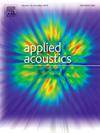空间探测用实用的恒定性能圆柱形声学气体温度计
IF 3.4
2区 物理与天体物理
Q1 ACOUSTICS
引用次数: 0
摘要
目前用于火星或月球气象温度现场观测的热敏电阻、热电偶等环境恶劣的温度计,一旦安装到现场,就很难重新校准。然而,空间辐照等环境因素改变了电阻-温度关系,导致测温不确定度较大。声波气体测温(AGT)是基于气体粒子的声能与热力学温度之间的物理不变的基本关系,具有长期的可靠性,因此无需校准。然而,现有的AGT声学谐振器体积较大,典型直径超过60毫米,这使得温度计不切实际。减小谐振腔尺寸的主要困难在于尺寸越小,测量质量因子越低。随着温度的升高和声波导的引入,这种限制变得更加严重。在这项工作中,提出了一种小型的圆柱形谐振器(内径30毫米,内长40毫米),用于AGT的声波导。结果表明,在213k ~ 400k温度范围内,测量到的氩气谐振频率的相对标准偏差小于1.0×10-4。得到了标准不确定度为0.05 ~ 0.43 K的热力学温度。考虑到热不均匀性,校准不确定度从0.05 K到1 K不等。便携式AGT具有在太空等恶劣环境下对温度计进行原位校准的潜力,其不确定度比目前的估计低几倍。本文章由计算机程序翻译,如有差异,请以英文原文为准。
Practical cylindrical acoustic gas thermometer of constant performance for space exploration
It is difficult to recalibrate thermometers currently used in harsh environment such as thermistors and thermocouples for in-situ observation of meteorological temperature on Mars or the moon once they are installed in site. However, environmental factors like space irradiation change the resistance–temperature relation, which results in large temperature measurement uncertainties. Acoustic gas thermometry (AGT) works on a physically invariant fundamental relation between gas particles’ acoustic energy and thermodynamic temperature with long-term reliability, which makes calibration unnecessary. Nevertheless, the existing acoustic resonators of AGT are bulk with typical diameters more than 60 mm, which makes the thermometers impractical. The principal difficulty of reducing resonator dimension lies in that the quality factor of measurement tends to be lower with a smaller size. This limit becomes more serious with increasing temperature and introducing acoustic waveguides. In this work, a miniaturised cylindrical resonator (30 mm in inner-diameter, 40 mm in inner-length) with acoustic waveguides for AGT is proposed. The results indicate that the resonant frequencies in argon at temperature from 213 K to 400 K were measured with the relative standard deviation less than . The thermodynamic temperature with the standard uncertainty from 0.05 K to 0.43 K was obtained. Calibration uncertainty varied from 0.05 K to 1 K considering thermal inhomogeneity. The portable AGT has the potential for in-situ calibration of thermometers in harsh environment like space with an uncertainty of several times lower than present estimation.
求助全文
通过发布文献求助,成功后即可免费获取论文全文。
去求助
来源期刊

Applied Acoustics
物理-声学
CiteScore
7.40
自引率
11.80%
发文量
618
审稿时长
7.5 months
期刊介绍:
Since its launch in 1968, Applied Acoustics has been publishing high quality research papers providing state-of-the-art coverage of research findings for engineers and scientists involved in applications of acoustics in the widest sense.
Applied Acoustics looks not only at recent developments in the understanding of acoustics but also at ways of exploiting that understanding. The Journal aims to encourage the exchange of practical experience through publication and in so doing creates a fund of technological information that can be used for solving related problems. The presentation of information in graphical or tabular form is especially encouraged. If a report of a mathematical development is a necessary part of a paper it is important to ensure that it is there only as an integral part of a practical solution to a problem and is supported by data. Applied Acoustics encourages the exchange of practical experience in the following ways: • Complete Papers • Short Technical Notes • Review Articles; and thereby provides a wealth of technological information that can be used to solve related problems.
Manuscripts that address all fields of applications of acoustics ranging from medicine and NDT to the environment and buildings are welcome.
 求助内容:
求助内容: 应助结果提醒方式:
应助结果提醒方式:


